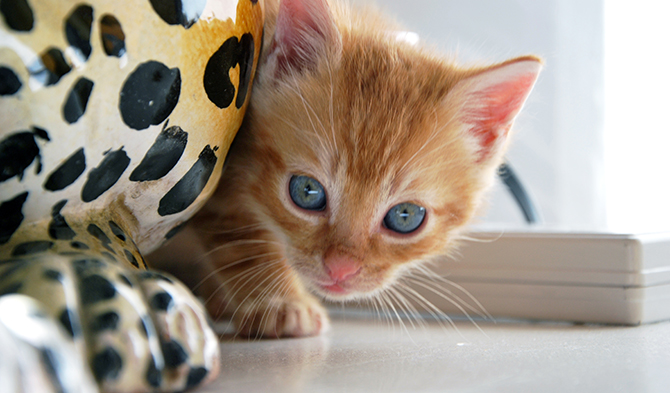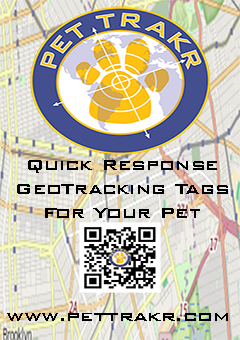How Old Is That Kitten?
Why it matters and what to do

By Kathleen O’Malley
Cat lovers and cat rescuers, especially those who practice Trap-Neuter-Return (TNR), sometimes find kittens living outside as strays or as part of a feral cat colony. For many, their first instinct is to scoop up the kittens and find them homes, but that’s not necessarily the best thing for the kittens—or you. Bottle-feeding neonate kittens, or socializing and caring for older feral kittens, are both time-consuming processes that require devotion, patience, and attention. The decision to bring feral kittens into your home should not be taken lightly.
You’ll be better equipped to decide what that outdoor kitten needs if you have a fairly good idea of how old he is. Kittens six weeks and under are easy to socialize for eventual adoption, but they need bottle-feeding or special weaning food, and round-the-clock care. Kittens between six and eight weeks old can eat on their own but still require socialization and a lot of care. Kittens eight to twelve weeks old who are feral will require more intensive, time-consuming socialization to become adoption candidates. Feral kittens over twelve weeks old are even more difficult to socialize successfully.
Here are some things to look for when estimating a kitten’s age:
1. Eyes wide open? Kittens are born with their eyes closed, and they don’t open fully until the kitten is about ten days old.
2. Are the ears pointy? Kittens’ ears are folded at birth and “pop up” at about three weeks of age.
3. On the move? Wobbly steps start at three weeks, and they’re steady by four weeks.
4. Eating solids? Kittens start weaning at four weeks. If younger, they won’t be tempted by food bait.
5. Out and about? By five to six weeks, kittens are coming out with mom to eat where she eats. This is a good time to trap the whole family and get mom spayed.
6. They grow up fast. Healthy kittens weigh about one pound at age four weeks, and they gain about one pound per month until they’re five to six months old. They may still have “baby faces” at four pounds/four months, but they’re actually about to enter puberty.
Take care when rescuing kittens for adoption. Be sure the mother really isn’t coming back before scooping up neonates. Also, keep in mind that grabbing feral kittens will sabotage their socialization. If kittens are running away or hissing and spitting at you, they should be trapped instead of scooped up. The exceptions to this rule are nursing kittens, who can show defensive “feral” behavior as young as three weeks, but can’t be lured into a trap or carrier with food because all they eat is mother’s milk. Just patiently and gently scoop them up or scruff them, one by one, and place them into a carrier; they’ll forgive you as soon as you start bottle-feeding them.
The NYC Feral Cat Initiative teaches tried-and-true taming methods to help rescuers successfully socialize kittens. With older kittens, there is no guarantee of success, so always have a contingency plan in place. We recommend starting them with a two-week trial period; if there’s no progress by then, we recommend neutering, eartipping, and returning them to their colony before it becomes unfamiliar to them.
For more information on managing feral-born kittens, visit www.nycferalcat.org.










